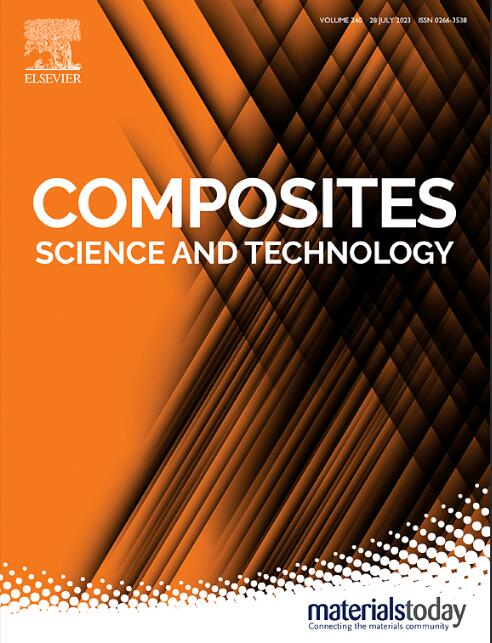液体复合材料成型过程中挥发输运和气泡动力学建模的综合框架
IF 9.8
1区 材料科学
Q1 MATERIALS SCIENCE, COMPOSITES
引用次数: 0
摘要
在液体复合成型(LCM)中,纤维预成型体的完全浸渍对于最小化孔隙率和达到预期的机械性能至关重要。当被困的空气、水分或树脂诱导的挥发物在凝胶化之前没有被有效地去除时,可能会形成空洞。这项工作的重点是在模具填充过程中挥发性物质的运输和转化,要么溶解在树脂中,要么以有核气泡的形式存在。为了做到这一点,有必要预测成核和溶解挥发物的成核、溶解和输运现象。本文提出了一个框架来模拟树脂浸渍过程中成核气泡的溶解、成核和跟踪。该框架与树脂浸渍过程的模拟相结合,提供了树脂在填充过程中的速度和压力。这种集成可以在浸渍过程结束时根据材料特性、工艺参数和零件几何形状预测空洞的位置和尺寸。运用该模型验证了挥发成核和溶解的模式,并考察了气泡迁移率对气泡动力学的影响。对气泡迁移率的影响,特别是对其大小的依赖性进行了评估。较大的气泡表现出足够的流动性,可以通过通风口逸出,有利于被动脱气,而较小的气泡往往会留下,并可能随着压力恢复而重新溶解。最后,在没有通风口的情况下,在合并流锋位置附近的气泡被证明,突出了实验观察到的焊缝周围孔隙堆积的趋势。本文章由计算机程序翻译,如有差异,请以英文原文为准。

A comprehensive framework for modeling volatile transport and bubble dynamics in liquid composite molding processes
In Liquid Composite Molding (LCM), the complete impregnation of fibrous preforms is essential to minimize porosity and achieve the desired mechanical performance. Voids may form when entrapped air, moisture, or resin-induced volatiles are not effectively removed prior to gelation. This work focuses on the transport and transformation of volatiles, either dissolved in the resin or present as nucleated bubbles, during the mold filling process. To accomplish this, it is necessary to predict the phenomena of nucleation, dissolution, and transport of both nucleated and dissolved volatiles. This paper presents a framework to model the dissolution, nucleation and tracking of nucleated bubbles during resin impregnation. The framework is integrated with the simulation of the resin impregnation process which provides the resin velocity and pressures during the filling. This integration enables the prediction of void locations and sizes at the end of the impregnation process as a function of the material properties, process parameters and part geometry.
The model is exercised to verify the patterns of volatile nucleation and dissolution and examine the effect of bubble mobility on bubble dynamics. The impact of bubble mobility, particularly its size dependence, is evaluated. Larger bubbles exhibit sufficient mobility to escape through the vents, facilitating passive degassing, while smaller bubbles tend to remain and may re-dissolve with pressure recovery. Finally, bubble entrapment near the location of merging flow fronts in the absence of a vent is demonstrated, highlighting the tendency for porosity accumulation around weld-lines as observed experimentally.
求助全文
通过发布文献求助,成功后即可免费获取论文全文。
去求助
来源期刊

Composites Science and Technology
工程技术-材料科学:复合
CiteScore
16.20
自引率
9.90%
发文量
611
审稿时长
33 days
期刊介绍:
Composites Science and Technology publishes refereed original articles on the fundamental and applied science of engineering composites. The focus of this journal is on polymeric matrix composites with reinforcements/fillers ranging from nano- to macro-scale. CSTE encourages manuscripts reporting unique, innovative contributions to the physics, chemistry, materials science and applied mechanics aspects of advanced composites.
Besides traditional fiber reinforced composites, novel composites with significant potential for engineering applications are encouraged.
 求助内容:
求助内容: 应助结果提醒方式:
应助结果提醒方式:


